Pergolas are awesome additions to residential or commercial buildings. They add outdoor space, increase shade, and provide great spots for relaxing or entertaining. There are often significant cost differences depending on buying DIY materials vs. paying a company’s fees to manufacture and install. You’ll also need to consider a pergola’s size and materials.
You can design and build your own pergola, buy a kit, or hire professionals to handle the entire process. But how much money will a pergola cost to build? What influences their prices? I have the answers! I’ll also cover additional considerations to assist with your pergola project.
Average pergola costs range from several hundred dollars for low-end pre-made products to tens of thousands for high-end custom models. The average cost of a pergola in the U.S. is about $3,600.
In the following article, I’ll explain:
- What a pergola is
- The differences between pergolas, trellises, and arbors
- The costs of building a pergola
- The costs of hiring a company to build a pergola
- Pros and cons of building a pergola
- Pros and cons of hiring a contractor to construct a pergola
- The importance of having a project plan
- Additional pergola-related considerations
What Is a Pergola?
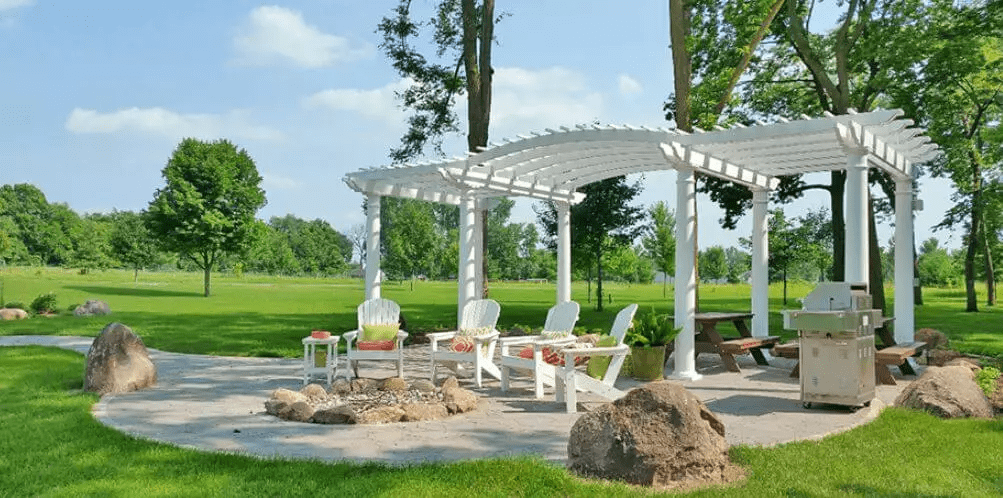
A pergola helps define outdoor spaces and provide backyard shade for years. Pergolas usually cover patios and provide shade during warm seasons and hot days.
A pergola is an attached or free-standing, square, or rectangular post and beam structure with an open top. Solid wood posts or columns traditionally hold beams that form a pergola’s flat-top frame. This frame supports plank slats or lattice to create some shade. Modern pergolas can have retractable fabric covers that provide complete shade and protect from heavy precipitation and even hail. Louvered roof pergolas protect from all types of weather, including snow.
Pergolas create shade over walkways, outdoor eating areas, backyard decks or patios, pools, and other areas. They sometimes have latticework attached to support vines, increasing shade and aesthetic enjoyment. Placing planks or lattices across the sun’s path breaks up solar gain during the hottest part of a typical day. The closer together your planks are, the more shade they provide.
The Differences Between Pergolas, Trellises, and Arbors
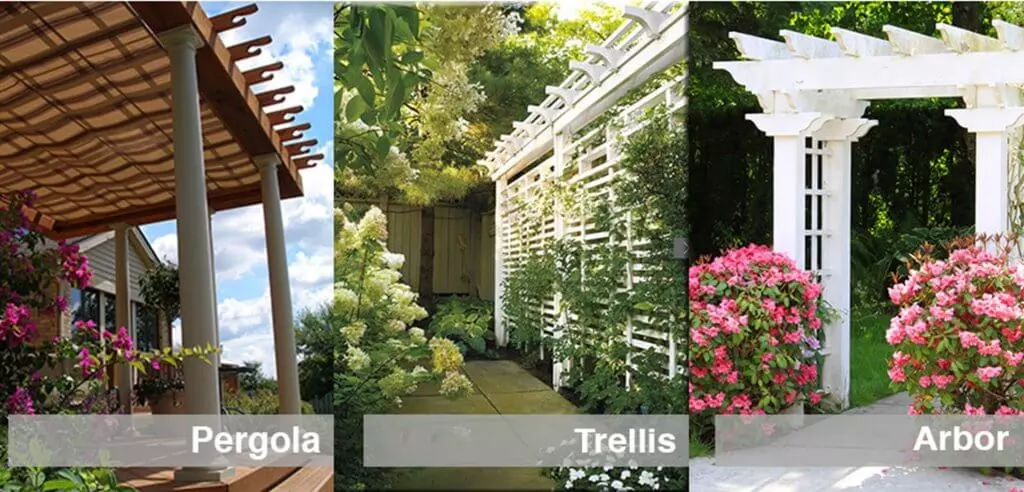
Although pergolas, trellises, and arbors enhance your outdoor spaces, they’re not the same things. Here’s a look at the differences between trellis, arbors, pergolas, and their costs.
Trellis
A trellis is a wooden fence-like structure supporting a latticework of horizontal and vertical slats (thin boards). The primary use of a trellis is to support greenery and vines. A trellis can be near a wall or used as a yard partition. You’ll usually find a trellis used for garden purposes. A custom made trellis can cost between $500 to $1,000+ for a professional installation.
Arbor
An arbor is a term for two or four vertical cedar supports, often featuring an arched cross member or roof structure. It is a small, shady place to rest. Arbors usually have latticework to support climbing greenery. Arbors can be great garden entrances, bench covers, or arches over paths. A custom made arbor typically costs between $2,500 to $3,500+ for a professional installation.
Pergola
A pergola incorporates aspects of a trellis and arbor. But a pergola isn’t the same as an arbor or trellis. A trellis forms a wall or barrier. An arbor is a small, shady place. A pergola is usually much larger, and its cost is also higher. Arbor, trellis, and pergola costs vary based on size, materials, and installation locations.
How Much Money Does It Cost to Build a Pergola?
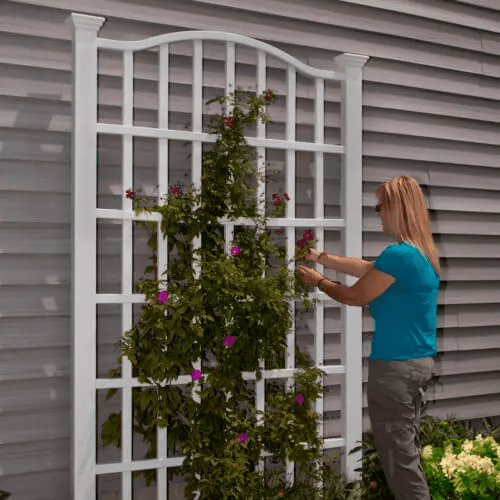
If you want to build your pergola, you can design it, buy a plan, or purchase a prefab kit. Your greatest savings will be on labor costs. For instance, the DIY costs to build a cedar pergola will total about $1,500 compared to the $2,500-$5,000 pergola costs of having a professional do everything. Taking the DIY route could let you use savings on upgraded accessories if your budget allows.
The cost of a pergola also varies depending on its frame substrate. Common frame materials are wood, PVC, stainless steel, or aluminum. If you choose a professional installation, the cost to build a pergola can range from $2,500 to $5,000+.
A 12’x12’ non-retractable pergola made of cedar costs about $1,500 for materials. If you buy a similar kit, it’ll cost about $3,300. In this case, $3,300 will be a little less than what a contractor charges to build something similar. The size and materials selected also influence how much a pergola costs.
If you use a non-retractable fiberglass pergola kit to reduce maintenance, it will cost about $8,000. A non-retractable aluminum pergola costs between $4,300 and $7,800, depending on material qualities and the ornateness of the pergola.
Expenses can increase based on pergola-related amenities. For instance, you’ll pay a higher overall cost for a motorized pergola that is retractable or one featuring expensive fabric.
How Much Does It Cost to Hire a Pergola Company?
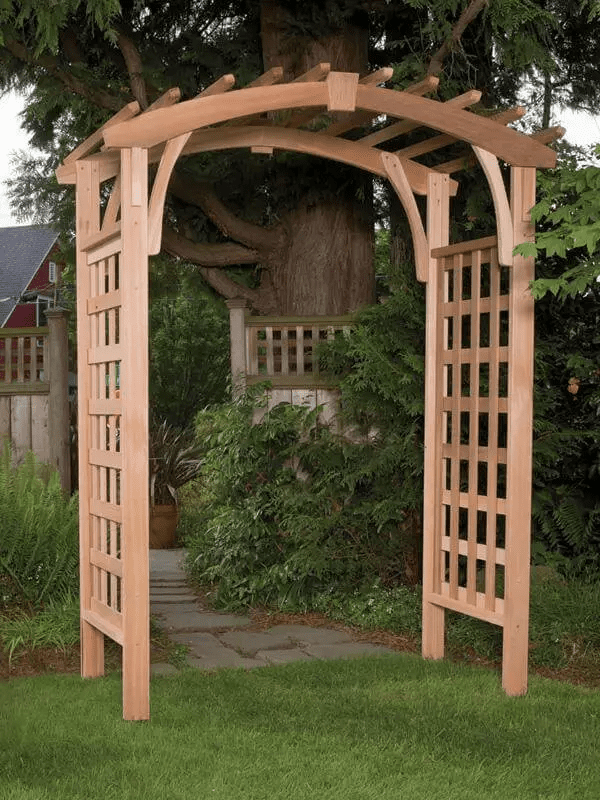
A contractor’s material costs are usually similar to expenses related to a DIY build. Generally, contractors may add a 5-10% markup covering time, labor, tool, and material-related costs. After adding everything together, you get your pergola installation costs. Installation costs for cedar, fiberglass, or aluminum kits can range between $460 and $560. Please note: All of the above dollar amounts provided in this blog will definitely vary based on size (width x projection) as well as the cost of living at the installation location.
The Pros and Cons of Hiring a Professional
Hiring an experienced professional to build a custom pergola or erect a kit can be a good idea. By doing this, you hire their expertise, knowledge, and tools. Before choosing a pergola company, find out how much it will cost to build your pergola.
Pergola prices depend on the size, materials used, options included, and whether you want mechanized parts. To reduce ongoing maintenance, aluminum, concrete, fiberglass, stainless steel, or vinyl posts and beams are definitely recommended instead of wooden ones.
An experienced contractor can give you different pergola cost estimations based on your choices. If you choose a kit or purchase a manufactured product, ask your contractor for a pergola installation cost breakdown. Knowing your overall costs upfront is better than unexpected expenses down the road.
Contractors should discuss permits (if needed), safety issues, the amount of shade needed and potential landscape concerns such as rainwater drainage locations. These discussions help ensure there are few or no surprises during the build.
Communication is the key to success when hiring a pro to build your pergola. Don’t be afraid to be as specific as possible. For example, if you want a motorized pergola made from aluminum, being exact gives you accurate aluminum motorized pergola cost estimations.
The pros:
- You get a quote
- Includes a warranty (in most cases)
- More pergola options are available
- Contractors have valuable experience, skills, and tools.
The cons:
- Increased total pergola costs
- Still having to control the project
The Pros and Cons of Building a Pergola
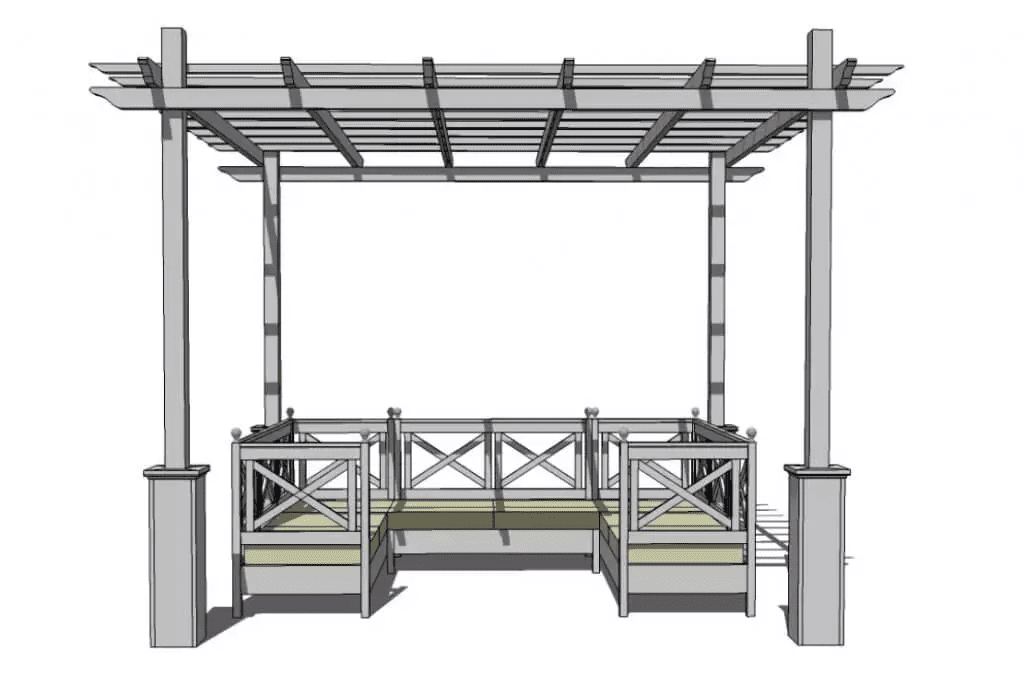
A 10×12-foot patio pergola is an ideal DIY project. Building a pergola lets you save on labor costs, choose your preferred materials, and enjoy everything pergolas offer.
The pros of DIY:
- Saving on labor costs
- Built to your design
- Select the materials you prefer
- Getting exactly what you want
The cons of DIY:
- Not having the necessary tools
- Time and budget constraints
- Not knowing what to do
- Committing permit violations (if any exist)
- No warranty
Why Having a Project Plan is Essential
Develop a project plan whether you or someone else builds your pergola. Having a project plan makes your upcoming project much easier. A plan lets you know what you want and where you want it.
If you want a kit or custom-built pergola, research companies providing these products or services. I recommend interviewing a company’s contractors/installers, getting quotes, and checking their references.
For the DIY route, your next step is to create your shopping list. It may also be wise to ask local pergola shops for pergola cost-related quotes. Don’t be shy about asking for help if you need it.
Here are some suggestions to include in your project plan:
- Choose where you want the pergola
- Check for utility lines – or contact your designated state’s free line-checking and marking services.
- Find out if you need any permits.
- Move any shrubs or trees you want to save.
- Determine the size of the pergola you want – a 10’x10’ is almost double the space of an 8’x8’.
- Decide if you want a pergola using a motor, and factor in motorized pergola costs.
- Clear the build site.
- Choose a design – what do you want the pergola to look like?
- Sketch out what you want – make a material list if you choose to DIY.
- Make a shopping list – get quotes if DIY
- Prepare the site–level or install footers if necessary.
- Gather materials and tools
- Layout and cut
- Begin to build – have your helper on hand.
- Have fun!
Additional Considerations
A pergola is not just something you cobble together. Proper planning and design provide you with a pergola offering shade from the sun and improving aesthetics for many years. During this time, there will be important issues to consider.
Keep the following considerations in mind:
- Consider the direction the sun travels—having the shade slats going the wrong way is a big mistake!
- Maintenance is another concern to think about. How often do you want to scrape, sand, stain, or paint your pergola? If you’re not into that, consider using a material for the posts and beams that requires little to no maintenance like aluminum for example.
- If you plan to entertain under your pergola, consider locating it close to your house or building for less fetching and carrying. You may also want to have electricity available for a retractable roof, lighting and music.
- You may want a motorized retractable guide wire or slide-on wire canopy system in the future for sun protection. A motorized retractable pergola roof offers protection from the sun and rain. Motorized pergola costs will be higher than non-motorized pergolas, but motorized options are far more convenient.
Conclusion
Pergolas are beautiful ways to add shade to outdoor spaces. Hopefully, you have a better idea of what a pergola costs. I also hope I helped you decide whether to build a pergola, use a kit, have it custom-made, or buy it ready-made.
For exact information on pergola costs, check out the wide range of pergola reviews on our website, view testimonials for different contractors and manufacturers, and create a project plan. Then, you can decide what options and costs best suit your needs.
